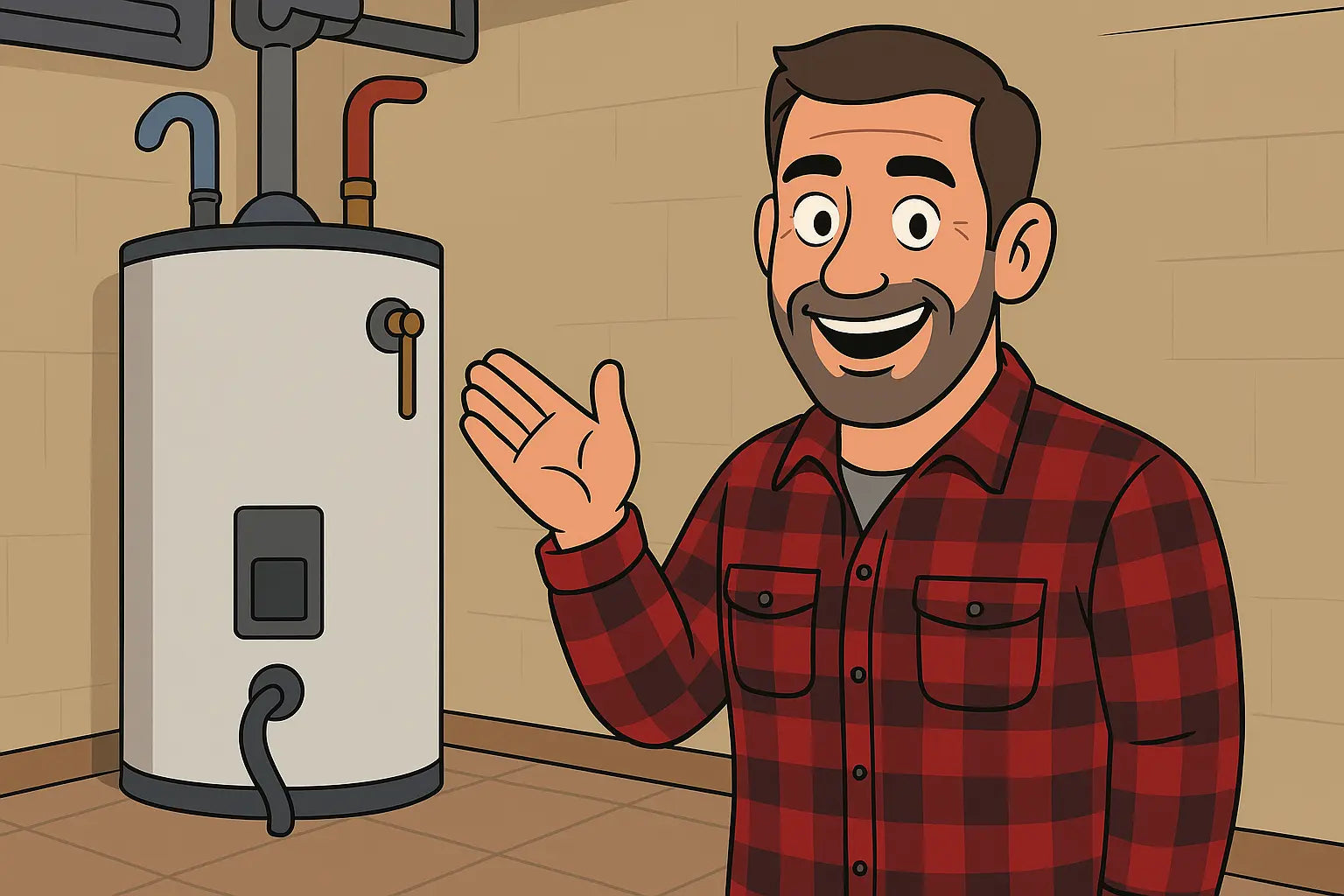Not All Hot Water Problems Are Big Problems
So, your water heater’s acting up. Maybe your shower goes cold halfway through, or the water’s just not getting as hot as it used to. Don’t panic—this doesn’t always mean a full replacement is in your future.
One of the most common reasons a 50–60 gallon electric water heater stops doing its job is a failed heating element. Good news? It's usually a pretty cheap fix—and if you’re handy with basic tools, you can often do it yourself.
Let’s go step by step, from testing the elements to replacing them safely, without risking a flood or a nasty shock.
🔎 Step 1: Diagnosing the Problem
Before you grab a wrench or head to the hardware store, you’ve got to know what you’re dealing with.
Most 50–60 gallon water heaters have two heating elements—an upper and a lower. Each one is controlled by its own thermostat. If you’re only getting a short burst of hot water, it usually means the lower element is burned out. If there’s no hot water at all, chances are your upper element is toast.
To test things properly, you’ll need:
-
A multimeter (a budget model like this one from Klein Tools)
-
A screwdriver
-
A non-contact voltage tester (safety first!)
Make sure you turn off power at the breaker before doing anything. You’re dealing with 240 volts—enough to knock you flat or worse. Use your voltage tester to confirm the power is truly off before you open up the panels.
🧪 Step 2: How to Test the Heating Elements
Once you’ve verified it’s safe, remove the access panels on the water heater. You’ll likely find two rectangular panels on the front with insulation and a plastic safety cover underneath.
Here’s what to do:
-
Remove the insulation and plastic covers.
-
Disconnect one wire from each terminal on the heating element.
-
Set your multimeter to the lowest ohms setting (Ω).
-
Touch one probe to each screw on the element.
You should get a reading between 10–30 ohms. A reading of infinity (OL) or zero means the element is faulty.
Want a visual? This step-by-step guide from AO Smith lays it all out with clear diagrams.
🧰 Step 3: Replacing a Faulty Heating Element
If one or both elements are bad, it’s time for a swap. Make sure to:
-
Shut off the water supply
-
Drain the tank below the element level (use a garden hose and open a hot water tap to vent it)
-
Use a heating element wrench (they’re cheap and available at most hardware stores or online)
Once you’ve got the bad element out, take it to your local store or match it online. Most residential heaters use standard 240V, 4500W or 5500W screw-in elements, but check your model to be sure.
Installing the new element:
-
Insert it carefully with a new rubber gasket.
-
Tighten it securely with the wrench.
-
Refill the tank before restoring power. Turning on the power too early can dry-fire the element.
Still unsure? This video walkthrough from The Spruce shows the entire replacement process clearly.
🧯 Pro Tip: Always Check the Thermostats Too
Sometimes the thermostats are the real issue—not the elements. If your multimeter shows good resistance on both elements but you’re still having issues, use this guide from Service Champions to test the thermostats and swap them if necessary. They’re cheap and just as easy to replace while you’re already in there.
🔧 Don’t Forget the Drain Valve
If you’re draining the tank anyway, it’s a good opportunity to flush out sediment. Built-up minerals can wreck your heating elements and lower efficiency.
✅ When to Call a Pro
If you’re not comfortable working around electricity or plumbing—or you just don’t have the time—there’s no shame in calling a licensed pro. You’ll still save time and hassle by knowing what the issue is and what parts are needed.
For those who want a deeper dive, check out this helpful resource from the U.S. Department of Energy on water heater troubleshooting and efficiency tips.
Final Word from Mike 🧰
If your water heater’s not doing its job, don’t jump straight to replacing the whole thing. In a lot of cases, it’s a $20 part and 30 minutes of your time that gets everything working again. Knowing how to test and replace heating elements is one of the smartest DIY skills any homeowner can learn.
Need a new unit altogether? Browse our full line of 50–60 Gallon Electric Water Heaters at The Furnace Outlet. We’ve got high-performance models, fair prices, and fast shipping—no contractor markup, no nonsense.
Thinking of upgrading your water heater? Visit: A Real-World Look at Costs & Benefits.
Until next time—stay warm, stay smart, and keep your tool belt ready.
—Mike, your cool HVAC neighbor 🔧







